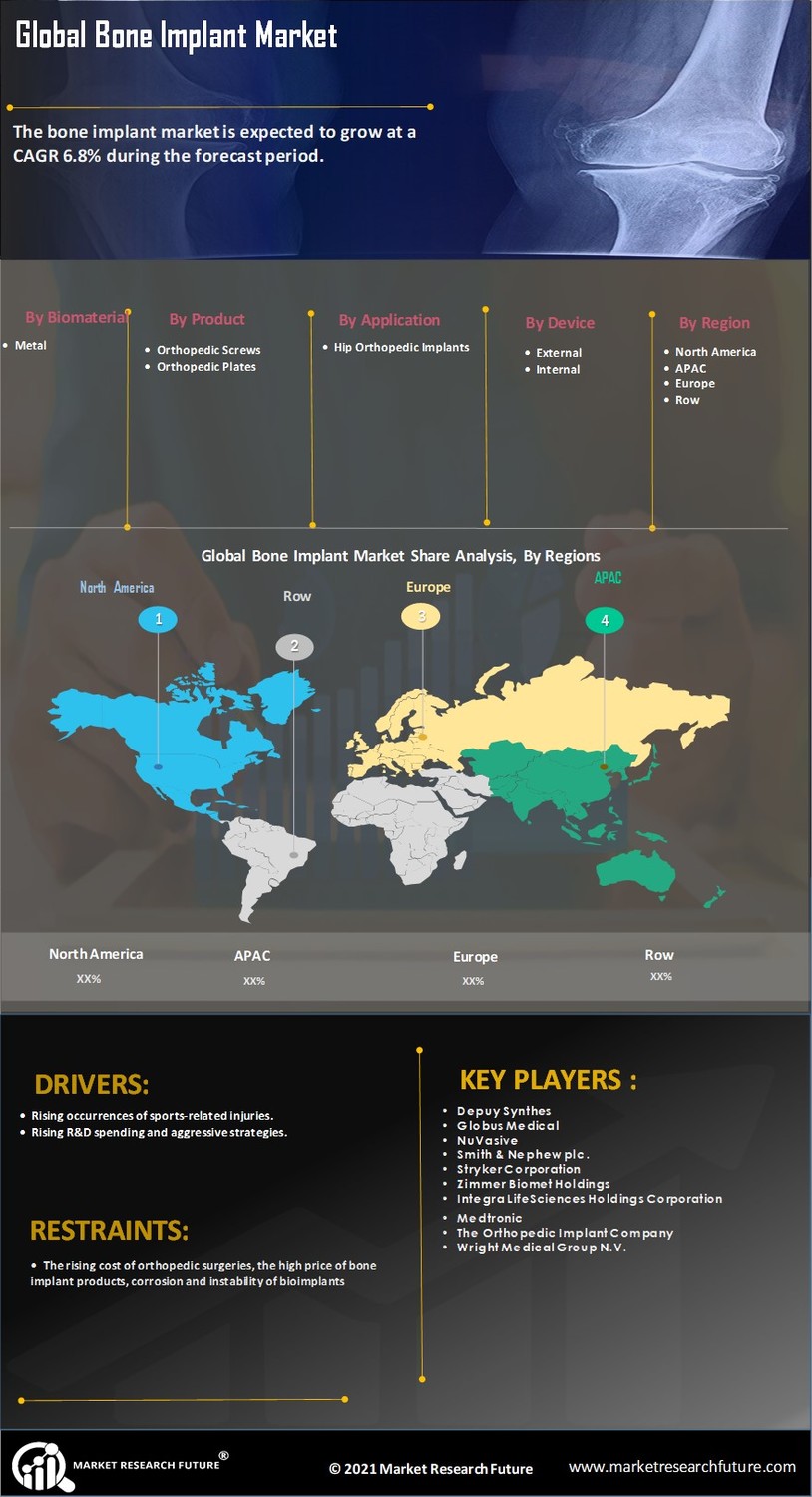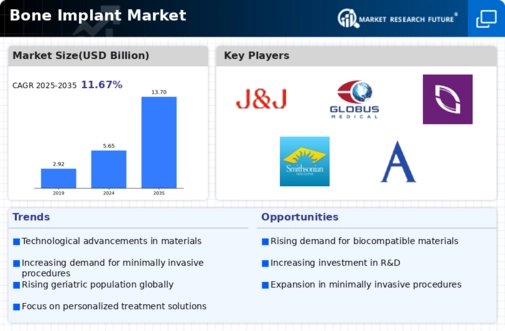Increasing Healthcare Expenditure
The rise in healthcare expenditure across various regions is significantly impacting the Bone Implant Market. As governments and private sectors allocate more funds towards healthcare, the availability of advanced medical technologies, including bone implants, increases. Data indicates that healthcare spending is projected to grow at a compound annual growth rate of 5.4% over the next five years. This financial commitment allows for the adoption of innovative surgical techniques and high-quality implant materials, which are essential for successful orthopedic procedures. Additionally, the growing awareness of the importance of bone health is driving patients to seek surgical options, thereby boosting the demand for bone implants. The Bone Implant Market stands to benefit from this trend, as enhanced funding leads to improved patient access to necessary treatments.
Rising Incidence of Bone Disorders
The increasing prevalence of bone disorders, such as osteoporosis and osteoarthritis, is a primary driver of the Bone Implant Market. As populations age, the incidence of these conditions rises, leading to a greater demand for surgical interventions. According to recent data, approximately 200 million individuals are affected by osteoporosis worldwide, necessitating effective treatment options. This trend is expected to continue, with projections indicating a significant rise in the number of orthopedic surgeries performed annually. Consequently, the demand for bone implants is likely to surge, as healthcare providers seek to address the needs of patients suffering from these debilitating conditions. The Bone Implant Market is thus positioned for growth, driven by the urgent need for innovative solutions to manage bone health.
Regulatory Support for Innovative Solutions
Regulatory bodies are increasingly supporting the development and approval of innovative solutions within the Bone Implant Market. Streamlined approval processes and incentives for research and development are encouraging manufacturers to invest in new technologies and materials. For example, the introduction of expedited pathways for breakthrough devices allows for faster access to market for novel implants that demonstrate significant advantages over existing options. This regulatory environment fosters innovation, enabling companies to bring forth advanced solutions that meet the evolving needs of patients and healthcare providers. As a result, the Bone Implant Market is likely to experience accelerated growth, driven by the introduction of cutting-edge products that enhance patient outcomes and safety.
Technological Innovations in Implant Design
Technological advancements in implant design and materials are transforming the Bone Implant Market. Innovations such as 3D printing and bioactive materials are enhancing the performance and integration of implants within the human body. For instance, the introduction of porous titanium implants has shown promising results in promoting bone ingrowth and reducing the risk of implant failure. Furthermore, the market is witnessing a shift towards personalized implants tailored to individual patient anatomies, which could potentially improve surgical outcomes. As these technologies continue to evolve, they are likely to attract investment and research, further propelling the growth of the Bone Implant Market. The integration of smart technologies, such as sensors within implants, may also pave the way for real-time health monitoring of patient recovery.
Aging Population and Increased Surgical Procedures
The aging population is a crucial factor influencing the Bone Implant Market. As individuals age, they are more susceptible to bone-related issues, leading to an increase in surgical procedures such as joint replacements and spinal surgeries. Current statistics suggest that by 2030, the number of individuals aged 65 and older will reach approximately 1.4 billion, creating a substantial market for orthopedic solutions. This demographic shift is prompting healthcare systems to adapt and expand their orthopedic services, resulting in a higher demand for bone implants. Moreover, advancements in surgical techniques and postoperative care are encouraging more patients to opt for surgical interventions, further driving the growth of the Bone Implant Market. The intersection of an aging population and enhanced surgical capabilities presents a unique opportunity for market expansion.

















Leave a Comment